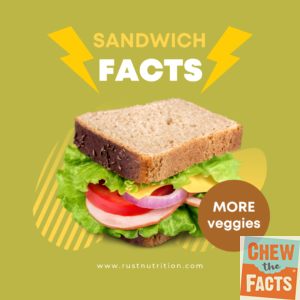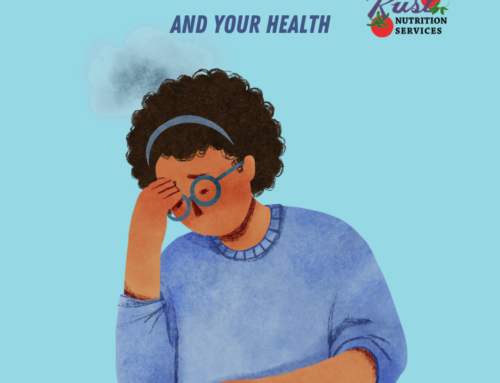Can we talk?
I’ve been fighting misinformation in the food, diet and nutrition social media space for over 15 years. It’s like a snowball rolling down an infinite snowy mountain, impossible to catch.
The mission of Chew the Facts® is to clear up misinformation. And I’m here to tell you it’s okay to eat a sandwich.
Add more plants
We know that plants, namely fruits and vegetables, are good for us. They support health. They have antioxidants and other nutrients that reduce disease risk. However things get blurry in the media. Here are a couple of quick examples.
- When Michael Pollan said “eat more plants” years ago, everyone applauded. However he followed that up with a book about his “food rules”, reinforcing a more restrictive diet.
- When dietitians shut down the simplistic “eat less processed food” messages, they created the term “ultra-processed” foods. Processed food may be items like canned fruit, canned vegetables, cereal or pasta. There is no clear and consistent definition for ultra-processed food. I’ll save those details for another post.
As a nutrition professional who generally has a much broader knowledge base than the journalist who come up with sensationalized headlines, I find it maddening. The foods you choose to include in your diet are influenced by all sorts of things. The food patterns you grew up eating with, your culture, where you live, and your overall access to food – all impact your diet.

Consider the Nuance
Nutrition in terms of health is very nuanced. It’s about your OVERALL dietary pattern, not one treat or one meal. Or even one day. It’s about what you eat over the course of days, weeks, months – that impact your health. It’s not whether you have a Whole Foods nearby, it’s what you can do with the foods available to you.
As a dietitian, I am aware of both the social disparities in my community as well as the uncontrollable factors (genetics, gender, environment) that impact health.
For a diet pattern to be sustainable it must be enjoyable, convenient, accessible and affordable. Like a sandwich. How can a sandwich fit into a healthy eating pattern?
Add more veggies. Use whole grain bread if available. Add a side of fruit.
Sandwich Building Considerations
🔑 The key? Adding MORE fruits and veggies to foods you enjoy, like sandwiches
🍅 It’s easy enough to slice a whole medium-sized tomato onto a sandwich. You can also add lettuce, greens, sliced onion, or diced bell peppers.
🤛 Manage the sodium. Deli meats are high in sodium, and bread adds a sodium punch too – If you have high blood pressure, a sandwich may not be your best daily go-to lunch. But it certainly can fit into a diet pattern for lowering blood pressure. While the American Heart Association recommends a 2300mg sodium daily limit, some of the DASH Diet research trials showed blood pressure lowering even with sodium as high as 3000mg.
🥪 Choose a whole grain roll or bread when you can. Does this mean you can’t enjoy a French roll sometimes? Nope. The recommendation is to “make half of your grains whole-grain.” That means you can choose refined grains half the time too (breads, cereals, white rice, pasta, etc)
Focus on Adding, not Removing
When treating disease, the first step to modifying what you eat is to add good stuff to what you already like. Or enjoying smaller portions of foods higher in sodium or saturated fat for instance.
When you put the focus on adding foods to your diet (like more fruits and veggies) they will likely displace some other foods. For instance, when you pile a sandwich with veggies that you like, you can use a little less meat or cheese, but still make a delicious sandwich.
Say no to anyone who wants you to avoid entire food groups or talks about “food rules” in absolute terms.
Come on over to the sandwich side. It’s full of light and happiness.
Take the First Step to Better Health
Looking for some quick nutrition guides to get you onto the path of better eating? Check out my digital downloads.




